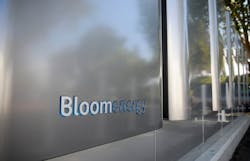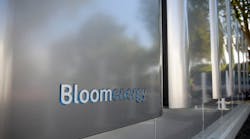Powering the AI Boom: How Onsite Power Generation Technologies with Integrated Cooling is a Game Changer for Data centers
The rapid surge in AI workloads, grid instability, and rising sustainability pressures are forcing a fundamental rethink of how data centers are built and operated. As rack densities soar to over 120 kW, driven by GPU-heavy AI workloads, cooling demands are skyrocketing, often consuming 35–50% of total facility energy. As a result, the data center industry is moving swiftly toward liquid cooling technologies to manage these intense thermal loads. As data centers continue to evolve to accommodate the growing needs of AI workloads, the average Power Usage Effectiveness (PUE) still hovers at 1.58, dragged down by inefficient, energy-intensive infrastructure.
To stay ahead of their growing power and cooling needs, data centers must move beyond the grid dependance and embrace onsite power generation with integrated cooling—a high-efficiency, high-reliable, low-carbon model built for the AI era.
From Backup to Backbone: The Rise of Onsite Power Generation with Integrated Cooling
Onsite power generation at a data center typically describes the facility’s back up power systems. Today, these onsite power plants include technologies such as fuel cells, or combustion technology that go beyond back up power to generate base load electricity directly at the data center, minimizing transmission losses and enhancing reliability. These systems also produce high-temperature waste heat (350°C–500°C), which can be captured and converted into chilled water through absorption chillers—ideal for cooling the next wave of AI infrastructure.
This integrated approach turns waste into value—delivering both power and cooling from a single system. By replacing mechanical chillers and reducing infrastructure redundancy, these systems significantly improve overall efficiency, and optimize the energy footprint of dense computing environments, and reduce emissions including Hydrofluorocarbons (HFCs), further enhancing the solution’s sustainability benefits.
Five Strategic Benefits for Onsite Integrated Power and Cooling for Data Centers
1. Energy Efficiency
Onsite generation eliminates transmission losses and enables intelligent reuse of waste heat for cooling. This boosts total energy utilization and reduces dependency on inefficient grid-sourced electricity—essential in an era of rising power costs and capacity constraints.
2. Cost Savings
By generating power and cooling at the source, data centers can significantly lower both capital and operational expenses. The results are reduced total cost of ownership through lower utility bills, minimized infrastructure requirements, and fewer backup systems.
3. Scalability and Flexibility
These systems can be modular and tailored to specific power and cooling requirements. As data centers scale, these innovative solutions allow for rapid deployment without the delays or constraints of grid interconnection, enabling agile growth.
4. Reliability and Resilience
Onsite generation provides a consistent, local power supply and cooling—crucial for facilities that need to operate 24/7. Integrated into a microgrid, these systems ensure uninterrupted operations during outages and enhance energy security for mission-critical workloads.
5. Sustainability and Carbon Reduction
Advanced onsite technologies enable cleaner operations by improving energy efficiency and supporting the transition to lower-carbon fuels. With rising pressure to meet ESG (Environmental, Social and Governance) goals, these systems provide a credible path toward long-term emissions reduction, especially solutions that involve non-combustion technologies.
Solid Oxide Fuel cells (SOFC): The Cutting Edge of Clean Onsite Power
SOFC fuel cell technology offers market-leading electrical efficiency around 60% net LHV (Lower Heating Value) accompanied by a high-temperature exhaust perfect for driving absorption chillers. When configured in a combined power and cooling setup, fuel cell systems can achieve cumulative system efficiencies near 90% net LHV — far exceeding conventional technologies.
SOFC fuel cells are inherently future-ready. They run on natural gas and biogas today and are capable of transitioning to 100% hydrogen as supply chains mature. This makes them a strategic investment for data centers targeting net-zero emissions without sacrificing performance or reliability.
By consolidating power and cooling infrastructure, SOFC fuel cells drive PUE gains of 10–20% and enabling AI data centers to operate leaner, cleaner, and more efficiently.
Looking Ahead: A Blueprint for Sustainable Growth
AI is reshaping everything—from business to biology—and data centers are the backbone of that transformation. But with great computing power comes great energy and cooling demand. SOFC Fuel cell technology with integrated cooling, offers a practical, scalable, and sustainable path forward.
To gain more insights on the future of data center power and cooling, click here.
About the Author

Rakesh Govindasamy
Rakesh Govindasamy is a clean energy professional with diverse experience in strategy, business development and product management. In his current role as Senior Director - reference architecture for Bloom Energy, his role is to collaborate with diverse teams and industry partners to support the development and scale-up of innovative decarbonization solutions. His journey includes roles at Baker Hughes, and GE, where he contributed to a range of clean technology and energy transition efforts.

Prateek Vyas
Prateek Vyas is Ph.D. in Energy Transition, a Bureau of Energy Efficiency certified Energy Manager (EM- 13406) & TUV certified ISO 50001 internal energy auditor and works for CTOs office at Bloom Energy, a solid oxide fuel cell and Electrolyzer manufacturing company. With 16+ years in energy industry he specializes in energy management and transition domain.


